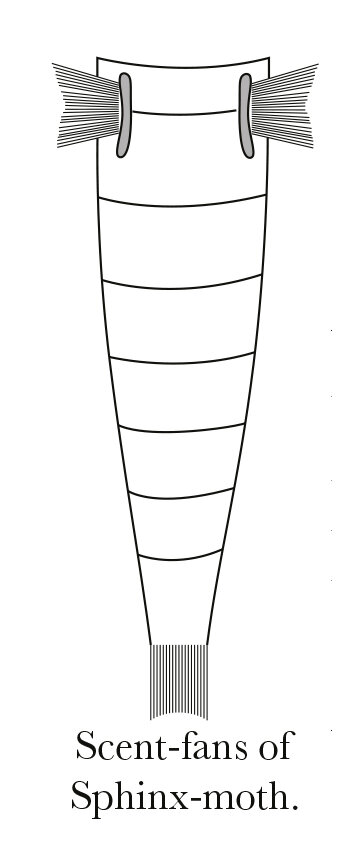From Fritz Müller [27 November 1877]1
Santa Caterina, Brazil
My children lately caught on flowers of Calonyction (sp. ?) a Sphinx-moth, the proboscis of which is 22 centimetres long. As I think that you would be glad to see this curious proboscis I send it to you.2 […] During the month of October I have watched for some weeks the butterflies visiting a Lantana near my house, the flowers of which are yellow the first day, orange the second, purple the third day, and falling off on the morning of the fourth.3 Eight out of eleven species of butterflies (Heliconius apseudes, Colænis Dido, C. Julia, Dione Juno, Hesperocharis Anguitia, Eurema Leuce, Daptonoura Lycimnia, and Callidryas Cipris) never touched an orange or purple flower, limiting their visits exclusively to the yellow ones.4 Two specimens of Pieris Aripa (or Elodia?) proceeded in the same way, whilst a third specimen of this Pieris inserted its proboscis indifferently into yellow or orange flowers.5 Three specimens of Danais Erippus evidently preferred yellow flowers, but sometimes also tried orange flowers, and one of them even once put its proboscis into a purple flower; a fourth specimen of Danais visited yellow flowers only.6 Lastly, I saw three specimens of Hesperidæ, but as I did not catch them, and as the species most closely resemble each other, I do not know whether they belonged to the same species; two visited exclusively yellow flowers, the third indifferently flowers of any colour—yellow, orange, or purple.7 These observations, of which a full account will be published in the ‘Archivos do Museo Nacional do Rio de Janeiro,’ confirm those by Delpino on Ribes aureum and Caragana arborescens.8 If the flowers lasted but one day the flower-heads would be by far less conspicuous; if they lasted three days without changing colour, butterflies would lose much time in visiting honeyless, already-fertilized flowers. […] Yesterday I caught, for the first time, the male of a Sphinx-moth which exhaled a strong musk-like odour; as you know, this is also the case with the males of the European S. convolvuli and S. ligustri; but nobody has as yet, so far as I know, indicated the odiferous organ. It is formed by two pencils of hairs situated on the ventral side of the base of the abdomen, and when at rest are perfectly hidden by the scales (hairs?).9

I do not remember whether I have already called your attention to an interesting secondary sexual character observable in several species of Callidryas and some other Pierinæ. The costal margin of the anterior wing is sharply serrated in the males, while it is smooth in the females. In Callidryas Philea some females have the wings smooth, others serrated, but in a far less degree than in the male. This may be a sort of weapon in the battles of the males.10 Whether in Papilio Grayi, P. Cleotas, P. Coræbus, and their allies, the serrated margin of the fore wings is limited to the male sex I do not know, not having yet caught females of these rare species.11
Footnotes
Bibliography
Correspondence: The correspondence of Charles Darwin. Edited by Frederick Burkhardt et al. 29 vols to date. Cambridge: Cambridge University Press. 1985–.
Delpino, Federico. 1873. Ulteriori osservazioni e considerazioni sulla dicogamia nel regno vegetale. Articolo IV. Delle piante zoidiofile. Atti della Società Italiana di Scienze Natural 16: 151–349.
Summary
Sends proboscis of a Sphinx-moth that is 22 cms long.
Discusses eleven species of butterfly which visit Lantana, a plant which blooms only for three days and whose flowers are yellow on the first day, orange on the second, and purple on the third. Most species only visit the flowers when they are yellow.
Describes and draws the odiferous organs of a Sphinx-moth.
Describes a secondary sexual character of several species of Callidryas and other Pierinæ: the costal margin of the anterior wing is sharply serrated in the males, while it is smooth in the females.
Letter details
- Letter no.
- DCP-LETT-11255F
- From
- Johann Friedrich Theodor (Fritz) Müller
- To
- Charles Robert Darwin
- Sent from
- Santa Caterina, Brazil
- Source of text
- Transactions of the Entomological Society of London (1878): (Proceedings) ii–iii
Please cite as
Darwin Correspondence Project, “Letter no. 11255F,” accessed on 18 April 2024, https://www.darwinproject.ac.uk/letter/?docId=letters/DCP-LETT-11255F.xml


